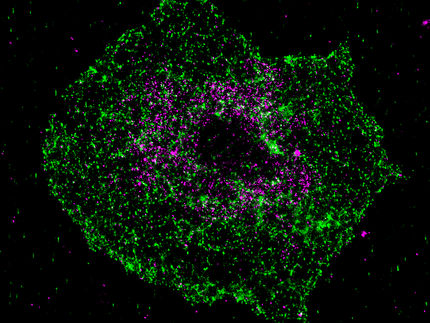Elusive platelet count and limb development gene discovered
New study will enable better antenatal diagnosis for sufferers of rare blood and skeletal disorder
Researchers have identified an elusive gene responsible for Thrombocytopenia with Absent Radii (TAR), a rare inherited blood and skeletal disorder. As a result, this research is now being transformed into a medical test that allows prenatal diagnosis and genetic counselling in affected families.
The team used genetic sequencing to discover that TAR results from low levels of the protein called Y14. They found that the syndrome occurs by a unique inherited mechanism.
Platelets are the second most abundant cell in the blood. Their main task is to survey the blood vessel wall for damage and to plug and repair it where required. Some people are born with low numbers of platelets and these rare conditions are thought to be inherited. TAR syndrome combines the unique features of low platelet count and prominent bleeding, especially in infancy, and skeletal abnormalities affecting the upper limb ranging from absence of the radial bone in the forearm to virtually total absence of upper limb. The genetic basis of TAR syndrome has eluded researchers for 50 years.
"Without the use of modern genomics technologies, the discovery of this unexpected mechanism of disease inheritance would have been much more difficult", said Dr Cornelis Albers, from the Sanger Institute and the University of Cambridge. "To achieve our latest findings, we deciphered about 40 million letters of genetic code in five patients."
Many people with TAR were known to have a deletion in one copy of chromosome 1, but this was thought not to be the whole story because parents who carry the same deletion are not suffering from TAR: other variants had to be involved. The team sequenced the genomes of people affected by the disorder who also carried the deletion and discovered that the vast majority of them had one of two variants of a gene called RBM8A. They found that when the genetic deletion and one of the variants are co-inherited by a child, TAR results.
RBM8A controls the production of the protein Y14. They found that the combination of the genetic deletion of one copy of the RBM8A gene and the variants on the other copy greatly reduces the level of Y14. The team concluded that it is low levels of Y14 that affect platelet formation and cause TAR disorder.
"The lack of production of adequate amounts of the protein Y14 in TAR patients only seems to effect the formation of platelets but not of other blood cells." said Dr Cedric Ghevaert from the University of Cambridge. "We have shed some light on how some inherited disorders can present with such striking features associating seemingly unconnected characteristics such as skeletal and blood defects"
This is the first human disorder identified to be caused by a presumed defect of the Exon Junction Complex, part of the cellular machinery that contributes to producing messages that direct protein production. This study opens the path that could lead to the identification of the genetic basis of other similar inherited syndromes, which will help improvements in diagnosis, genetic counselling and patient care in the NHS and beyond.
"The discovery of the gene for TAR will make it simpler to diagnose more accurately future cases with a simple DNA test. This new test is currently being developed for the NHS as part of the international ThromboGenomics initiative led by Professor Ouwehand" commented Dr Ruth Newbury-Ecob, Honorary Reader in Medical Genetics and Consultant in Clinical Genetics at the University of Bristol Hospitals.
Original publication
Other news from the department science

Get the analytics and lab tech industry in your inbox
By submitting this form you agree that LUMITOS AG will send you the newsletter(s) selected above by email. Your data will not be passed on to third parties. Your data will be stored and processed in accordance with our data protection regulations. LUMITOS may contact you by email for the purpose of advertising or market and opinion surveys. You can revoke your consent at any time without giving reasons to LUMITOS AG, Ernst-Augustin-Str. 2, 12489 Berlin, Germany or by e-mail at revoke@lumitos.com with effect for the future. In addition, each email contains a link to unsubscribe from the corresponding newsletter.






















































